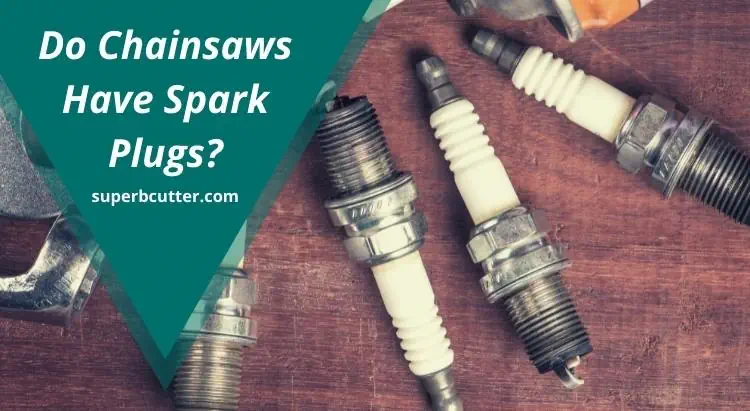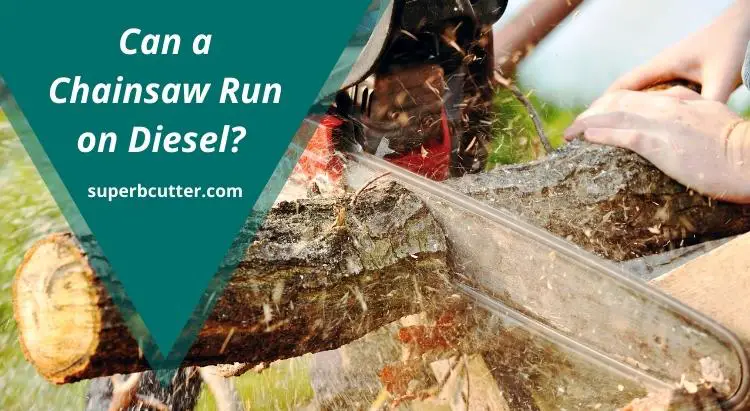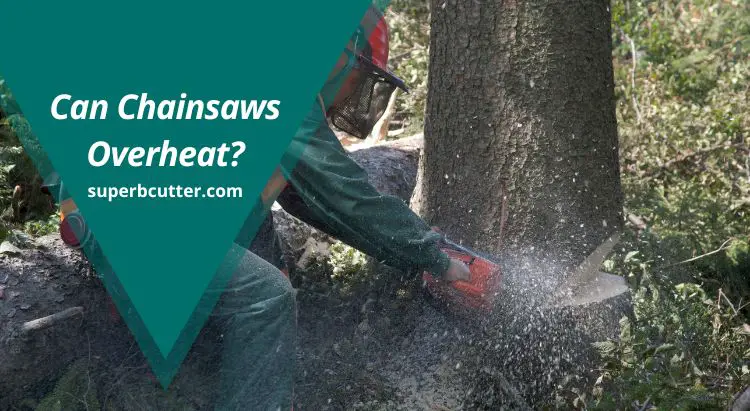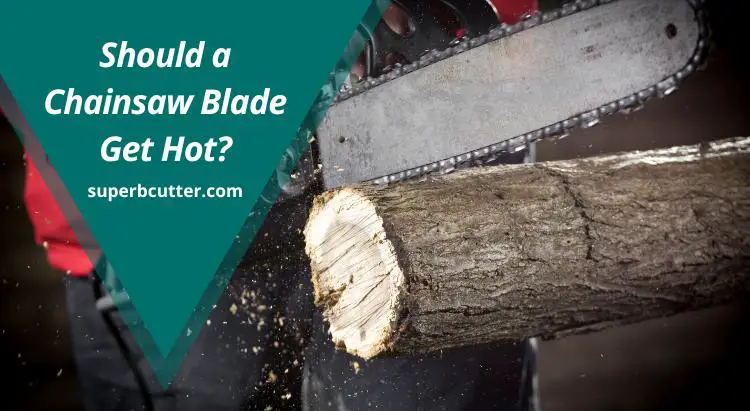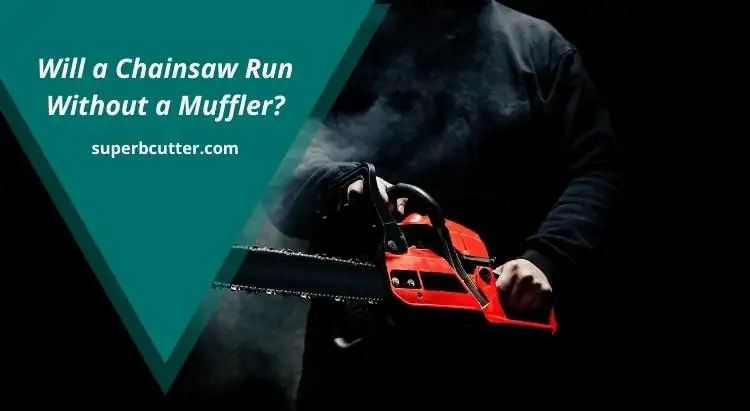How Does a Chainsaw Work? (The Bible of Chainsaw Working)
For those of you who are wondering how does a chainsaw work, this post is for you. We will be discussing the basics of how a chainsaw works, and some of the different features that you may find on a chainsaw.
A chainsaw is a mechanical saw that is used to cut through wood. The chain on a chainsaw is made up of sharp teeth that are able to quickly and easily cut through wood.
Chainsaws can be powered by either gas or electricity. Gasoline-powered chainsaws are usually more powerful than electric-powered chainsaws, but they can be more difficult to start and maintain.
Electric-powered chainsaws are typically less powerful than gasoline-powered chainsaws (1), but they are easier to start and maintain.
How does a Chainsaw Work in General?
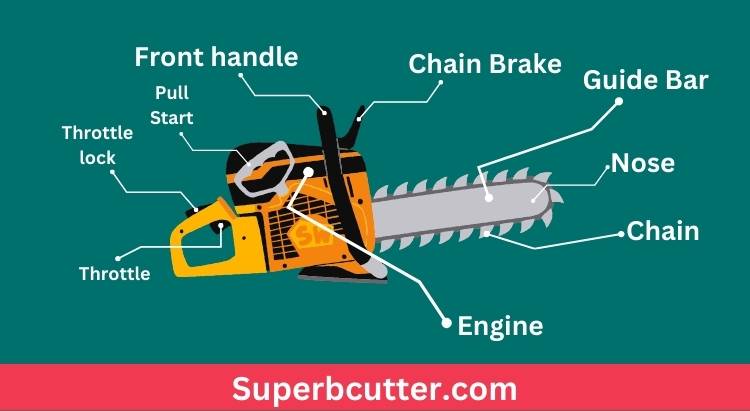
The first thing that I would like to tell you is how does a chainsaw work in general.
Chainsaws are propelled by engines that use a gas mixture as fuel (2). This engine helps drive the bar guide, which has a chain with sharp teeth mounted on it.
When the chainsaw’s engine is started, the bar guide begins to rotate, causing the attached chain to rotate at an accelerated rate. In general, this is how chainsaws operate.
The teeth of the chain are designed to cut through wood quickly and easily. However, the depth of the teeth will determine how deep the cut will be.
Shallow teeth are designed for making shallow cuts, while deeper teeth are designed for making deeper cuts (3).
Working of a Chainsaw Engine
Now that you have a basic understanding of how the engine of the saw works, let’s dig deeper into the topic and learn about the working mechanism of each individual part of the chainsaw. This will give you a better idea of how does a chainsaw work.
We will start with the working mechanism of the chainsaw engine as it is the most important part of the tool.
The chainsaw engine is responsible for providing power to the tool. It uses a gas mixture as fuel, which is then ignited by a spark plug. This ignites the mixture and causes the piston to move up and down.
This movement of the piston drives the crankshaft, which in turn drives the bar guide that holds the chain. As the bar guide rotates, the attached chain also rotates at an accelerated rate.
Chainsaw engines come in two different types: two-stroke and four-stroke. Two-stroke engines are smaller and lighter than four-stroke engines, but they are less powerful.
Working Mechanism of a Chainsaw Chain
As we have already discussed, the chain is the part of the chainsaw that does the actual cutting. It is made up of sharp teeth that are designed to quickly and easily cut through wood.
The tooth configuration of the chain is extremely important to understand how a chainsaw work.
The three most common types of tooth configurations are: standard, low-profile, and skip tooth. Standard teeth are the most common type of teeth found on chainsaws. They are designed for general cutting purposes.
Low-profile teeth are designed for making precision cuts. Skip tooth chains have fewer teeth than standard or low-profile chains, which makes them ideal for cutting through softwood.
The Concept of Chainsaw Oiler and Its Working
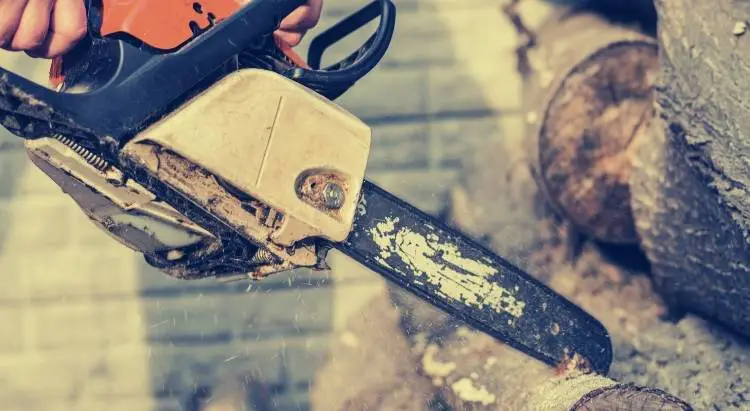
The chainsaw oiler is a small, metal canister that helps lubricate the chain on your chainsaw by holding and dispensing oil through a hole in its top. The canister attaches to the chainsaw with a metal bracket and has a small tube that runs from the canister to the chain.
When you pull the trigger on the chainsaw, the oil is released from the canister and travels through the tube to the chain. It then lubricates the chain as it moves around the bar. This helps to keep the chain from becoming dry and brittle and prevents it from breaking or coming off of the saw.
Chainsaw oilers are an important part of using a chainsaw, and should be checked regularly to make sure that they are full and working properly. If the oiler is empty, or if the chain is not getting enough oil, it can cause the chain to break or come off of the saw.
If you are having problems with your chainsaw oiler, or if you think that it is not working properly, you should take it to a chainsaw dealer or service center for help. They will be able to check the oiler and make sure that it is full and functioning properly.
Clutch System in a Chainsaw and its Working
The clutch on your chainsaw is responsible for engaging and disengaging the chain. It is located at the end of the crankshaft and is connected to the bar guide by a small metal shaft.
When you pull the trigger on the chainsaw, the clutch engages and starts rotating the bar guide. This causes the attached chain to rotate at a high speed, which cuts through wood.
When you release the trigger, the clutch disengages and stops rotating the bar guide. This prevents the chain from continuing to rotate, which can be dangerous if it comes in contact with your skin.
The clutch is an important safety feature on your chainsaw and should be checked regularly to make sure that it is working properly. If you think that there is a problem with your clutch, you should take it to a chainsaw dealer or service center for help.
How Does a Chainsaw Ignition Coil Work?
Next up is the ignition coil that you need to learn about. The working mechanism of a chainsaw ignition coil is not complicated. It is located near the flywheel of the engine and uses the magnetism that is produced by the rotation of the flywheel to produce electricity.
This electricity is then sent to the spark plug, which ignites the fuel in the cylinder. The ignition coil is an important part of the chainsaw and should be checked regularly to make sure that it is working properly.
If you think that there is a problem with your ignition coil, you should take it to a chainsaw dealer or service center for help. They will be able to test the coil and make sure that it is working properly.
How Does a chainsaw Primer Bulb Work
A chainsaw primer bulb is used to draw fuel into the carburetor. It is typically located on the side of the chainsaw, near the air filter. The primer bulb has a small rubber diaphragm that is connected to a metal rod.
When you press the primer bulb, the diaphragm pushes against the metal rod, which opens up a valve in the carburetor. This allows fuel to be drawn into the carburetor.
The purpose of the primer bulb is to make sure that there is enough fuel in the carburetor for the engine to start. If there is not enough fuel in the carburetor, the engine will not start. The primer bulb also helps to ensure that there is enough fuel in the carburetor for the engine to run at full power.
How Does a Chainsaw Carburetor Work
A chainsaw carburetor is a vital component in the proper functioning of the saw. It is responsible for mixing the fuel and air in the correct ratio to create a combustible mixture. The carburetor also regulates the amount of air that flows through the engine.
The carburetor has several parts that work together to achieve these goals. The fuel tank stores the gasoline until it is needed. The float bowl contains a float that rises and falls with the level of fuel in the bowl. This movement opens and closes a needle valve that regulates how much fuel enters the carburetor.
The air filter prevents dirt and other debris from entering the engine. Clean air is necessary for proper combustion and engine operation. The filter must be replaced regularly to prevent damage to the engine.
The throttle controls how much air flows into the engine.
How Does a Chainsaw Muffler Work?
A chainsaw is a powerful tool that can make quick work of felling trees and cutting through thick branches. But all that power comes at a price: the loud, earsplitting noise of the saw cutting through wood. That’s where the muffler comes in.
The muffler on a chainsaw works by redirecting exhaust gases away from the engine and out through a series of perforated tubes. This not only reduces noise pollution but also helps to cool the engine and keep it running smoothly.
While different chainsaw models have different designs, all work to effectively muffle the sound of the saw so that you can work without being deafened by the noise.
How Does a Chainsaw Winch Work?
A chainsaw winch is a mechanical device that is used to pull a heavy object, such as a tree stump, out of the ground. The device consists of a chain that is wound around a spool, which is attached to the object being pulled.
The other end of the chain is connected to a motor, which turns the spool and pulls the object out of the ground.
Chainsaw winches are typically used by professional loggers or arborists, as they are able to generate a large amount of torque, making them ideal for removing large objects. However, chainsaw winches can also be used by homeowners for smaller projects, such as removing tree stumps from their yards.
To use a chainsaw winch, the operator first attaches the chain to the object being pulled and then winds it around the spool.
How Does a Chainsaw Safety Mechanism Work?
How Does a Chainsaw Chain Catcher Work?
The next thing that you need to learn about is the working mechanism of the chainsaw chain catcher. The chain catcher is a safety feature that is designed to catch the chain if it comes off of the bar.
This can happen if the chain becomes damaged or if it is not properly tensioned. If the chain catches on the chain catcher, it will stop the chain from rotating and prevent it from causing injury.
The chain catcher is usually made of metal or plastic and is located at the front of the chainsaw.
How Does an Anti-Kickback Device Work?
The next thing that you need to know about is the working mechanism of the anti-kickback device. The anti-kickback device is a safety feature that is designed to prevent the chainsaw from kicking back at the operator.
This can happen if the chain becomes jammed or if it is not properly tensioned. If the chainsaw kicks back, it can cause serious injury to the operator.
The anti-kickback device is usually made of metal or plastic and is located at the rear of the chainsaw.
How Does a Chainsaw Spark Arrestor Work?
The next thing that you need to know about is the working mechanism of the chainsaw spark arrestor. The spark arrestor is a safety feature that is designed to prevent sparks from coming out of the exhaust port.
This can happen if the engine is running too hot or if there is a build-up of carbon in the engine. If sparks come out of the exhaust port, they can cause a fire.
The spark arrestor is usually made of metal or ceramic and is located at the end of the exhaust port. It is important to clean the spark arrestor regularly to prevent it from becoming clogged.
how does an electric chainsaw work?
An electric chainsaw is powered by electricity, typically from a battery. This makes it much quieter than a gas-powered chainsaw and also eliminates the need for gas and oil. However, an electric chainsaw may not have as much power as a gas-powered chainsaw.
A gas chainsaw has a two-cycle engine, whereas an electric variant has a brushless motor. The primary benefit of a brushless engine is that it is considerably more efficient, durable, and requires less upkeep. It also doesn’t require pistons or cylinders like the 2-cycle engine, so it’s much smaller and lighter than its counterpart.
The 2-cycle gas chainsaw engine uses a mixture of gasoline and oil to lubricate the internal moving parts, whereas the electric chainsaw has no need for oil since there are no internal moving parts that require lubrication.
The way these engines work is also different. The 2-cycle engine uses a piston that moves up and down inside the cylinder. This motion is converted into a rotational force that turns the chain.
On the other hand, the electric motor uses magnets that rotate around a fixed armature. This rotating magnetic field interacts with the armature to create rotational force. The chain is connected to the motor through a gearing system. The size of the chain and the bar also plays a role in how fast and powerful the chainsaw is.
All these factors make electric chainsaws more lightweight, compact, and easy to maneuver. They are also much easier to start since you don’t have to pull a cord to start the engine which makes them suitable for women and older people.
Another big advantage is that you don’t have to deal with the fumes and the smell of gas.
How to Use a Chainsaw Properly?
There are two types of chainsaws: standard and compact. Standard chainsaws are larger and heavier than compact chainsaws, but they are more powerful and can handle more difficult cutting jobs.
Compact chainsaws are smaller and lighter than standard chainsaws, but they are less powerful and are better suited for smaller cutting jobs.
The first thing you need to do when using a chainsaw is to make sure that the chain is properly tensioned. If the chain is not properly tensioned, it can come off of the saw and cause serious injury.
Next, you will need to choose the correct size of chain for the job you are doing. The size of the chain will determine how deep the cuts will be.
Once you have chosen the correct size of the chain, you will need to put the chain on the saw. To do this, you will need to line up the teeth on the chain with the teeth on the saw.
Once the chain is on the saw, you will need to pull the starter cord to start the saw. Be sure to hold onto the saw tightly with both hands when doing this.
Finally, you will need to guide the saw through the wood that you want to cut. Be careful not to put your hands in front of the blade while doing this.
Now that you know how a chainsaw works, you can use one with confidence and safely complete any cutting job.
Conclusion:
While chainsaws may seem like simple machines, there’s actually a lot of engineering that goes into making a chainsaw work properly. The chain itself is made up of dozens of tiny metal links, and the teeth are carefully sharpened to ensure that they can cut through wood smoothly.
The engine of a chainsaw is also quite complicated. It needs to be powerful enough to spin the chain at high speeds, but it also needs to be lightweight so that the saw can be easily maneuverable.
To conclude the above information, a gas-powered chainsaw uses a fuel mix to operate. The engine consists of various parts including a carburetor and an ignition system. The saw’s chain is made up of many tiny metal links, and the teeth are sharpened to make cutting wood easier.

